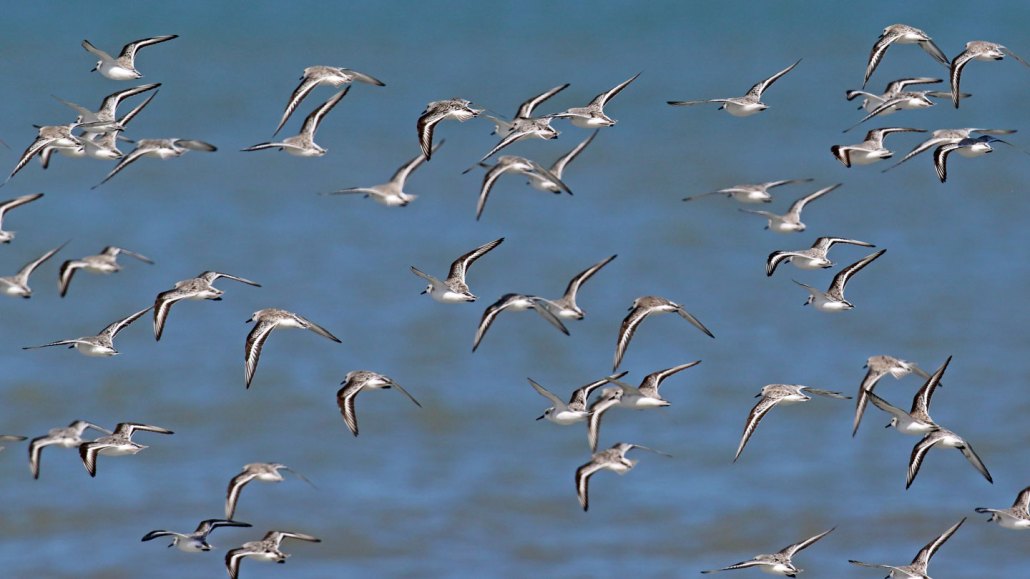
A flock of sanderlings (Calidris alba) flies over open water. A new analysis of virtually all bird species suggests that migratory birds, like sanderlings, are on average lighter in color than non-migrators.
Pablo F. Petracci

A flock of sanderlings (Calidris alba) flies over open water. A new analysis of virtually all bird species suggests that migratory birds, like sanderlings, are on average lighter in color than non-migrators.
Pablo F. Petracci